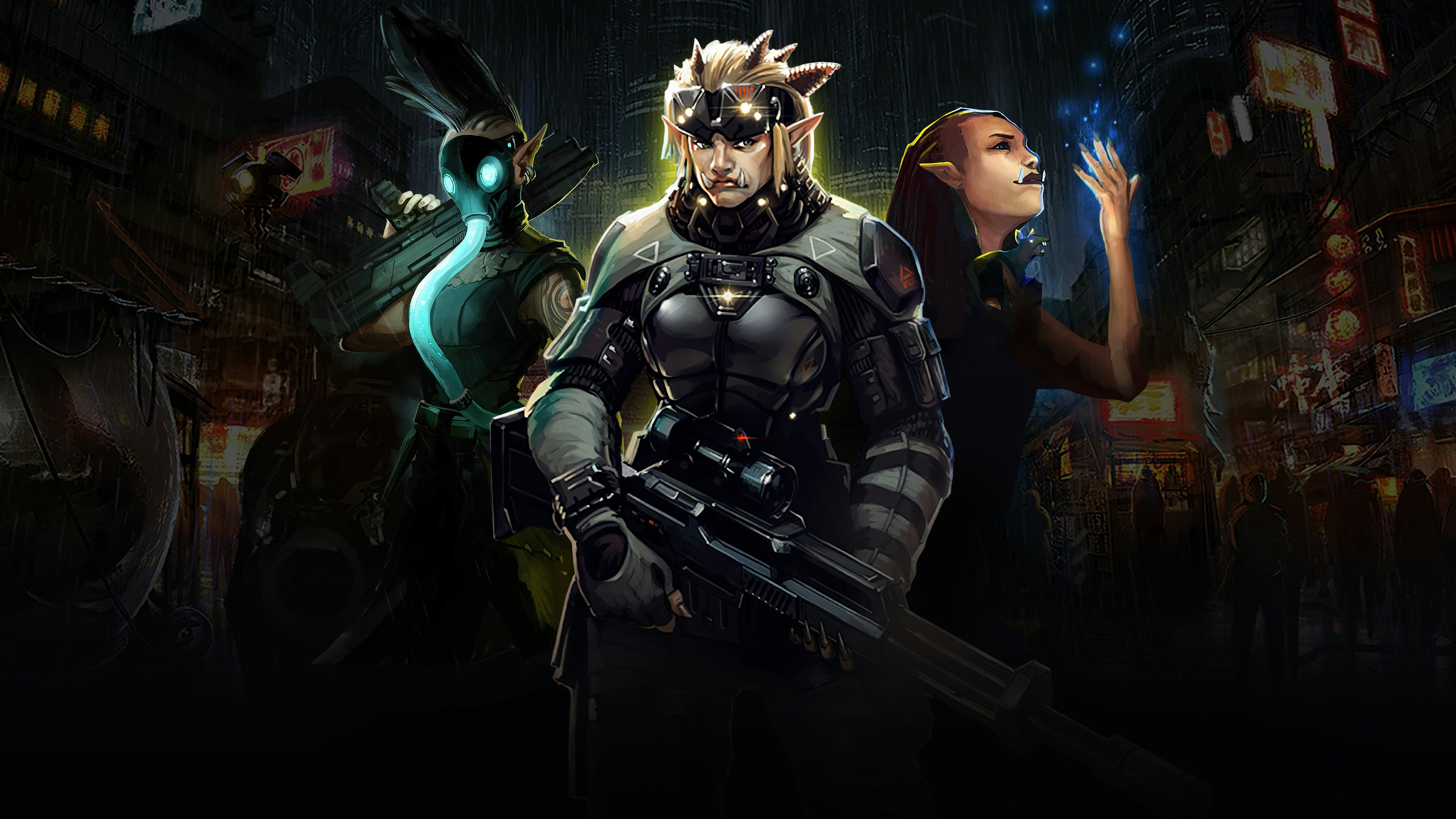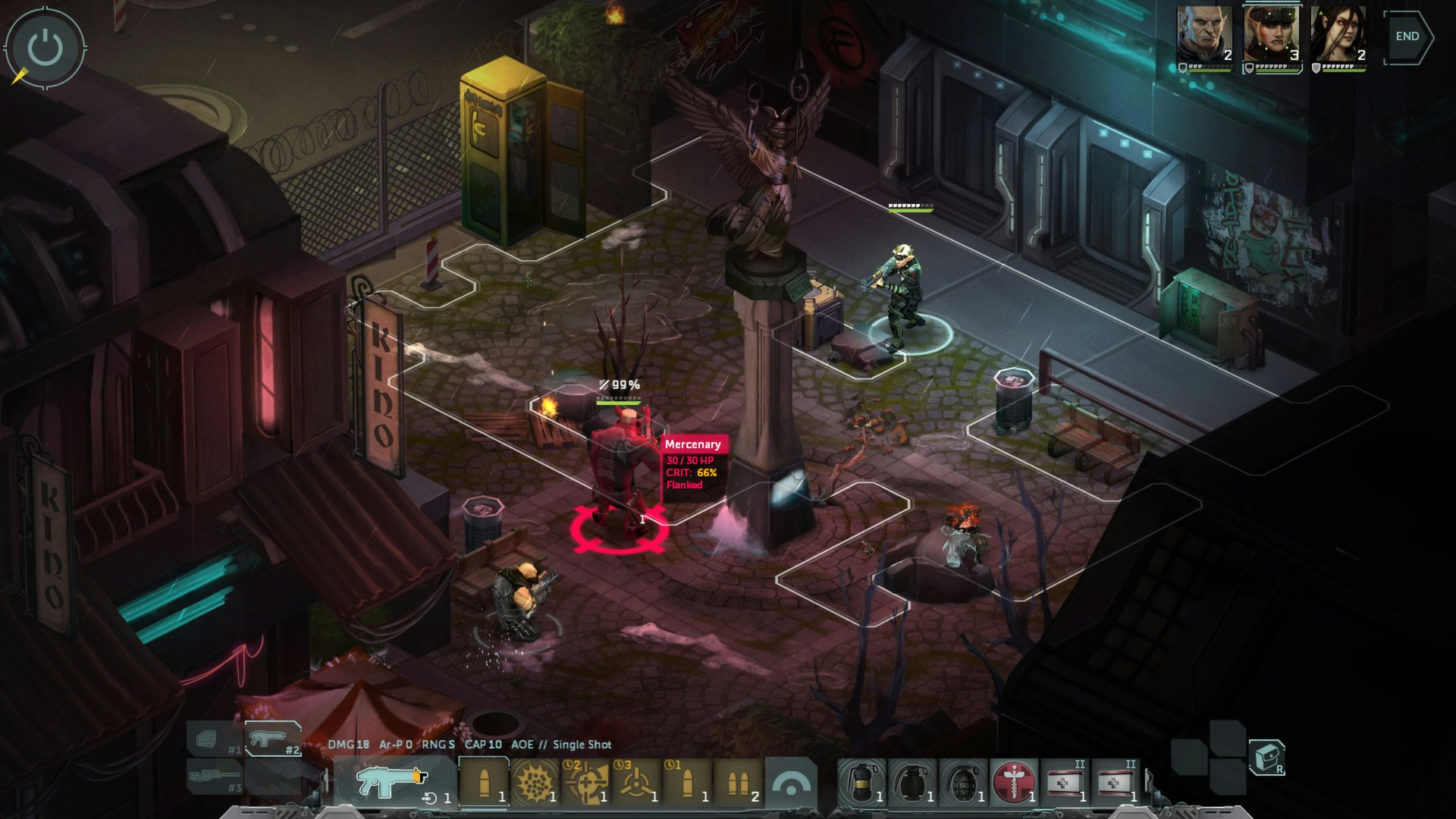
Like putting pineapple on pizza, sometimes it takes mixing two things that absolutely weren’t meant to go together to discover something great. That’s the case with Shadowrun, except in this case “pineapple” is magic-using elves, and “pizza” is a cyberpunk sci-fi RPG. Debuting in 1989 as a tabletop RPG with the most ’80s cover art possible, Shadowrun has gotten a few video game adaptations in the decades since. But none captures its ludicrous-sounding but somehow great blend of gritty sci-fi and fantasy as well as Harebrained Schemes’ Shadowrun Trilogy, now available on PlayStation Plus.
Released between 2013 and 2015, Shadowrun Returns, Shadowrun: Dragonfall, and Shadowrun: Hong Kong is a trilogy only in the loosest sense of the word. Yes, there are three of them, but they all tell completely unconnected, standalone stories. Each spotlights a different important city in the futuristic world of Shadowrun: Seattle, Berlin, and — you guessed it — Hong Kong.

To get it out of the way: if you start playing Shadowrun Returns and it’s not clicking, you might just want to skip ahead. Shadowrun Returns certainly has its charms, and it deserves credit for getting Harebrained Schemes’ trilogy going, but the other two games in the series are massive upgrades.
Compared to its predecessor, Shadowrun: Dragonfall has a better interface and changes that make combat a better experience, but where it really shines is in its story. In Shadowrun Returns, you’re a lone agent investigating your friend's disappearance, recruiting generic NPCs to help along the way. From the very start of Dragonfall, you’re embedded in a team. The game starts in the middle of a mission that goes horribly wrong, leaving you in charge of a ragtag gang of mercenaries. While the central mystery of Dragonfall is already far more captivating than the plot of Shadowrun Returns, it’s the characters that really set it apart.
A mysterious street medic with surgically implanted claws, your old boss’ terrifyingly devoted best friend, a punk rocker turned anti-fascist shaman — these are the core members of your crew, and each has a deep personal mission to play through, reams of interesting dialogue throughout the game, and a hell of a lot of baggage.
Your companions’ skills come into play during missions, so bringing a hacker along can help you shut down turrets, and a character who used to work for a megacorp might be able to talk you past security. But the main cast is so compelling that I constantly found myself leaving behind more useful characters to make room for the ones I just wanted to spend more time with.

Maybe it’s because it has a tough act to follow, but Shadowrun: Hong Kong isn’t quite the step up that Dragonfall was. Its story and characters are still wonderful, but they’re not quite as memorable as in the previous game — though it also features a shaman who keeps pet rats in her coat pockets, so that’s pretty hard to beat.
But it’s an unquestionable improvement when it comes to its art. Berlin and Hong Kong are both fascinating settings, but in Shadowrun: Hong Kong, the city is brought to life with the series’ most vibrant art. Every corner of its gigantic maps is filled with detail, from the pulsing neon of shopping districts to the supernatural gloom of the walled city.
The Shadowrun games’ captivating characters and stories are their greatest strengths, but its tactical combat is uniformly excellent as well. Given its sci-fi and fantasy mashup premise, you can use a huge array of abilities in battle. Having one party member summon a water spirit from a rain puddle while another hacks into a security door and a third picks off enemies with a katana feels a bit like dumping out a box of random action figures to play with as a kid. But it’s as fun as it is jarring. While there’s not as much room for character customization and creative skill use as you get in some other RPGs, the relatively straightforward combat is nonetheless satisfying.
Even when things are more or less on rails, the Shadowrun games do a great job of letting you direct the story. Decisions you make in missions — whether to help a side character or steal corporate secrets for yourself — won’t dictate the greater plot, but they offer a way to develop your character’s place in the world.
And in Shadowrun, the world is at least as interesting as any character. Megacorporations run by dragons, deals with demons, and spirits haunting the internet are all part of its strange tapestry, and your characters are caught in the middle. As with much of great cyberpunk, the Shadowrun Trilogy absolutely sells the “us against the world” mentality of its scrappy band of anti-heroes. And though its grim world often feels like it’s just about to crush your gang, surviving job by job with them is a thrill every time.







